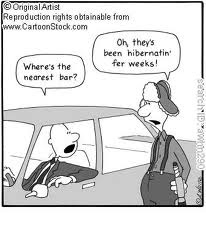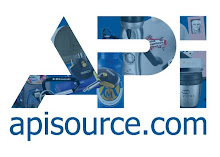The sports market is always a moneymaker, especially in the South. In the U.S., the estimated revenue in 2009 for employer firms on spectator sports was $31 billion, according to the U.S. Census. Distributors and suppliers are finding that the South is a great place to tap into this market. “The South also has a strong college sports tradition that lends itself to regular programs and repeat business,” says Margit Fawbush, communications manager at Norwood/BIC Graphic (asi/40480).
Think minor league, too. When Precision Heating and Cooling planned a giveaway to fans of the local Minor League Baseball team, The Frederick Keys, Leslie Simensen of EmbroidMe in Frederick, MD, brainstormed a catchy solution.A rubber ducky with baseball stitching imprinted with Precision’s tagline “Custom Duct Work” and contact information hit a home run with 1,200 Frederick Keys fans, as well as the team itself. Simensen has now provided The Frederick Keys with over 15 different imprinted products, from dog tags to symbolize team loyalty, to keychains, tote bags ... even “poop scoop” bag holders for a “Bark in the Park” promotion.
While creativity is key with customers in the south, so is good customer service. The EmbroidMe (asi/38400) franchise has nearly 400 locations throughout the United States and internationally.Approximately one-quarter of those franchisees are in the South, accounting for 35%-40% of the company’s U.S. sales. “Our stores all have good, hardworking people behind them who treat their customers well, particularly in the South. You find very genuine people in the region, who will tell it to you like it is,” says Mark Johnson, EmbroidMe president.
 |
| "Bless your heart" is a Southerners nice way of calling you an idiot. |
Businesses in the South know that happy customers talk ... so do the unhappy ones. In fact, a Harris Interactive study, “Customer Experience Impact Report,” shows that Southerners are the most likely to register a complaint when they experience bad customer service. This opens the door for distributors to provide programs that foster positive customer relationships, as well as train front line employees to better service those accounts.
It may also be the backdrop for efforts southern suppliers go to when servicing their distributors. Virginia Ts (asi/93917) has three locations, two of which are in the South, and 80% of its annual sales are southern-based. The company’s staff embodies a regional Attitude that customer happiness is of the utmost importance. “Our corporate offices and call center are located in Petersburg, VA.We have warehouses in Jacksonville, FL and Evansville, IN,” says Karen Clifton, marketing director for the Counselor Top 40 supplier. “Our southern philosophy remains the same at all locations: Our customers are the reason we come to work each day. We are here to form partnerships with them and help them achieve success.”
Strategic Positioning
A southern location, however, is about more than hospitality.Johnson notes strategic advantage as well. EmbroidMe’s corporate headquarters is based in West Palm Beach, FL, making it a good point of departure for international sales. “It’s easy to do business nationally and internationally from Florida,” Johnson says.
A southern base also sets the stage for easy import and export. With major air-travel hubs throughout the South (Atlanta, Miami, Dallas and D.C.), as well as seaports along the East Coast and Gulf of Mexico, southern states are conveniently positioned for travel and distribution. The appeal of locating corporate headquarters in the South isn’t lost on major business. Of the 2010 Fortune 500 list, 161 companies Are based in a southern state. Within the promotional products arena, several top distributors and suppliers call the South home.
Gold Bond Inc. (asi/57653) is a second-generation, family owned business with 65 years experience in the promotional products industry. Its Tennessee roots show clearly in a customer-centric philosophy that goes beyond the South to operational tactics nationally and internationally.“Our vision and growth are driven by the desire to improve our customers’ experience,” says Matt Hodges, director of marketing.“This includes our focus on inventory management and access to quality products. Over the last few years we expanded our presence in China and dramatically increased warehousing capacity.”
 |
| 49% people assume a Southern accent means you're nice. |
Gold Bond leverages its central location to boost distributors’ bottom lines, providing economical solutions regardless of a customer’s location. “The upward trend in shipping costs provides us with a strategic advantage on larger-sized items in the South, while our smaller items continue to sell well in and outside the region,” Hodges says. “We have many orders that are sold through distributors outside of the South; however, those same orders have a high likelihood of shipping to southern states. With increasing fuel and shipping costs, we continue to place a high value on our regional orders.”
Three of the four warehouses from which Staton Corporate and Casual (asi/89380) ships its orders are based in the South (Memphis, TN, Dallas and Orlando, FL). These locations, along with Staton’s Fullerton, CA, warehouse make one- and two-day delivery a snap for the vast majority of the U.S. This speeds turnaround and saves on shipping.
Southern Migration
You may find that more and more products will be distributed to southern audiences in the coming years, particularly if population growth trends have an impact.
The South led United States regions in the greatest rate of change in population growth according to the 2010 Census, up 14.3% from the 2000 Census.
The five southern states with the biggest increases in population are Texas (20.6%), North Carolina(18. 5%), Georgia (18.3%), Florida (17.6%) and South Carolina (15.3%).
According to the Gallup Job Creation Index’s “State of the States” report for 2010, the “Best Job Markets” are in energy- and commodity-producing regions. Five of the Top 10 states were southern (Texas, Maryland, West Virginia, District of Columbia and Arkansas). Of course, states like Texas and West Virginia are rich in natural resources for energy production, making them both excellent targets for related promotions. Southern states with significant farming, like Arkansas, benefited from commodity producing jobs. CNBC’s special report, “America’s Top States for Business” ranks Texas, Virginia and North Carolina as three of its top five choices.
“If there is a trend in the South, it is that large companies are drawn due to the reasonable cost of living, abundant supply of labor and good quality of life,” says Mitch Emoff, vice president of sales for Goldner Associates (asi/209800), a Nashville, TN-based distributorship.
The firm concentrates its sales Efforts in Nashville, Raleigh, NC, Orlando, FL, and Atlanta. Emoff states health care, technology and entertainment as key markets. “Even in Orlando, which is heavy in construction and hospitality, the use of promotional products is strong due to the recognition that promoting is essential to keep strong market share,” he says. “I see the South as a force in terms of having a solid economy with a consumer base with a growing amount of discretionary income.”
Goldner, however, isn’t limited to the South for promotional programs. “While a predominant number of companies we work with are based in the South, we have developed specialized online solutions that fit well with companies having offices and field people all across the country,” Emoff says. “Rapid growth means that clients no longer have the luxury of their internal marketing team facilitating all requests from their field personnel. They want to outsource and, at the same time, they want control. At Goldner, we have developed a system called ePOP (electronic Product Ordering Program) that combines stocked items with a wide selection of one-day production, made-on-demand items.”
A Good Deal
 |
| Atlanta wins the contest. Most coupons used. Ever. |
The typical southern consumer may be looking for a better deal than those in other regions of the United States. According to the 2010 Savings Index, a measure of online printed coupon savings by city, “The South is a mega saver.” More than one-third of the top penny-pinching cities are in southern states, making them collectively the “most frugal” region of the United States. Plus, Southerners are more likely to use mobile apps for couponing. The takeaway, therefore, is to promote savings programs that drive Southerners online for coupons or put a brand’s logo on their mobile devices via an imprinted cell phone “skin” or other accessory.
Distributors should help clients pay attention to minority markets, too. Hispanics, for example, account for more than half the population growth in Texas and Florida. During the last decade, Hispanics and African Americans have also made gains in business ownership in southern states, according to data from the Census Bureau’s most recent Survey of Business Owners.
Diversity requires creativity and promotional solutions custom designed to speak to the audience. The Icebox (asi/229395) is a top Atlanta promotional products company, with 6,000 customers primarily based in the metropolitan area. Its founders both hail from the South and combine southern charm with cosmopolitan sophistication.
The firm’s style is consultative, allowing the Icebox team to tailor promotional solutions to their clients’ customers. Whether creating a retail line of branded apparel for a barbecue joint or planning imprinted products for the Atlanta Beat, a women’s professional soccer team, the key is understanding demographics. “Soccer is popular among Hispanics,” says Adrian Sasine, director of marketing at The Icebox. “They’re also heavy cell phone users.” Therefore, using an imprinted cell-phone cover to promote the Atlanta Beat was a natural choice.
Size matters when considering a regional audience. Recently the Centers for Disease Control released data showing Southerners to be the least active Americans, with a higher rate of obesity. “It’s not unusual to include a Size 2X, 3X or 4X in apparel orders for the South,” Sasine says.
Outdoorsy Types
However, the South’s climate is ideally suited for recreational promotions, and the product choices for the region often reflect a lifestyle tendency to be outdoors. “From a sales standpoint we typically do see a bit different order type and product mix in the South than other regions of the United States,” says Fawbush. “The climate proves to be a key driver for products such as drinkware, coolers, beverage insulators and all sorts of bags. There are several run/ walk charity drives specifically based in the South due to the milder climate, and they use promotional products as the primary medium to reach new supporters.For an event like this there is a variety of products, such as our BIC Widebody Design Grip, which is produced with an awareness mold grip in your choice of pink, yellow or red. You can accompany that with a trendy Norwood Trek Bottle and a stylish Atchison sling pack.”
In addition, Fawbush recommends distributors look closely at destination/resort, travel/tourism, sports and marine markets for sales opportunities.
Lea Robinson, vice president of sales and marketing at Staton, expects continued growth in distributors’ sales to colleges, high schools and spirit groups. She sees the opportunity beyond T-shirts to tote bags, caps, stadium seats or any item that shows pride. “In the South, team sports are big, and not just football; it’s also baseball, basketball and soccer. There are many sports gaining popularity and it will continue to grow,” she says. For this reason, she recommends Noggin Wear Hoop Heads as a stand-out promotional solution. These colored headbands are topped with a sports net at the crown of the head, resembling a basketball hoop or generic sports goal. Like we said, Southerners appreciate humor.
“Niche-focused experts in vertical markets in the South are doing well.The key is to add value and bring a fresh perspective.”
Ryan Sauers,
Sauers Consulting Strategies
Sports aside, youth and collegiate markets are strong. Apparel that draws a youthful audience is key.Robinson notes burnout tees as popular for this demographic.Staton offers versions in both Canvas and Bella brands (for men and women). “The print on burnout looks spectacular,” she says. “It’s a youthful style That appeals to collegiate, fraternity and sorority audiences.” The fabric is lightweight for a southern climate.Consider too the opportunity for golf-promotion sales. “The South does have a longer golf season providing a longer sales cycle for tournaments, corporate golf outings and other outdoor events,” Hodges says.In addition, he’s noted a trend toward eco-friendly choices.“End-buyers are clearly searching for earth-friendly promotional products. We see this as a long-term trend and continue to add more products that are reusable, recyclable and biodegradable.This includes golf tees, water bottles and a new line of Eco Carry Tote and shopping bags.”
Recreational products fit easily into tourism and conference promotions. Meeting-planners pick destinations like Orlando, FL, Atlanta and Dallas for their exceptional convention facilities, hotels and visitor appeal. Beyond business travel, tourism thrives in the South. Forbes Traveler places two southern destinations on its list of Top 10 Tourist Attractions in the United States: Magic Kingdom Walt Disney World in Orlando, FL (with 17.1 million visitors) and the Great Smokey Mountains National Park in North Carolina and Tennessee (9.5 million visitors).
Growth Potential
Ryan Sauers, president and CEO of Sauers Consulting Strategies, is based in Atlanta and also names tourism as one of the fertile markets. But there’s much more for the savvy salesperson to target than the tourist trade. “The South offers a lot of growth potential. It’s really an untapped market,” he says.
“Niche-focused experts in vertical markets in the South are doing well. The key is to add value and bring a fresh perspective.”
He points to burgeoning metropolitan areas like Atlanta, Charlotte, Raleigh, Knoxville and Jacksonville where businesses are locating their headquarters. From health care to financial markets, there are sales waiting for those who drill down. “With health care, for example, go beyond the obvious hospitals and physicians to dentists, chiropractors and physical therapists. Pick a market and then look at the subsections,” he advises.
Sauers’ advice benefits salespeople regardless of region. After all, as he notes, with today’s social media, all the previous rules are thrown out the window.“Today’s boundaries are not so defined,” he says.“Everybody has a level playing field.”
Sales Primer
• Emerging Market: In 2010, the best job markets are in energy-and commodity producing regions, according to the Gallup Job Creation Index’s “State of the States” report, updated February-March 2011. Five of the top 10 states were southern, so if you’re looking to break in, focus on Texas and West Virginia.These two states are rich in natural resources for energy production.
• Keep Your Eye On: International clients. Since there are major air-travel hubs throughout the South, this location is strategically positioned for easy import and export. If you’re looking to break into this market, team up with a supplier in the South to cut down on shipping costs.
• How to Break In: If you’re looking to tap into something new, think about the recreational market. When choosing a sport, think golf. The South has a longer golf season, which gives you the opportunity for a longer sales cycle for tournaments and events.
• Hottest Market: It’s time to pay attention to minority markets. African-Americans in the South are moving to the area’s suburbs at the highest levels in decades, according to the Census. The report also shows that Hispanic population growth for the first time outpaced that of blacks and whites in most of the South, adding to the region’s racial and ethnic mix. Pew Hispanic Center analysis showed many of the biggest growths in this demographic have been in Alabama, Louisiana and North Carolina.
Top Five Distributors Headquartered in the South
Based on Counselor’s 2011 Top 40 list
1. Tic Toc
2. EmbroidMe
3. G&G Outfitters
4. Boundless Network
5. ECompanyStore
Top Five Suppliers Headquartered in the South
Based on Counselor’s 2011 Top 40 list
1. Norwood/BIC North America
2. Ennis
3. Staton Corporate and Casual
4. Hit Promotional Products
5. Virginia T’s Inc.
























